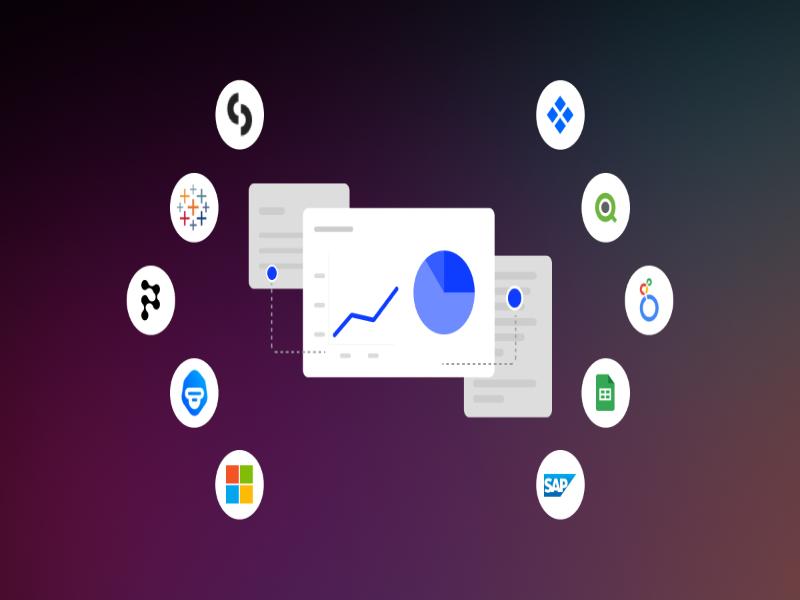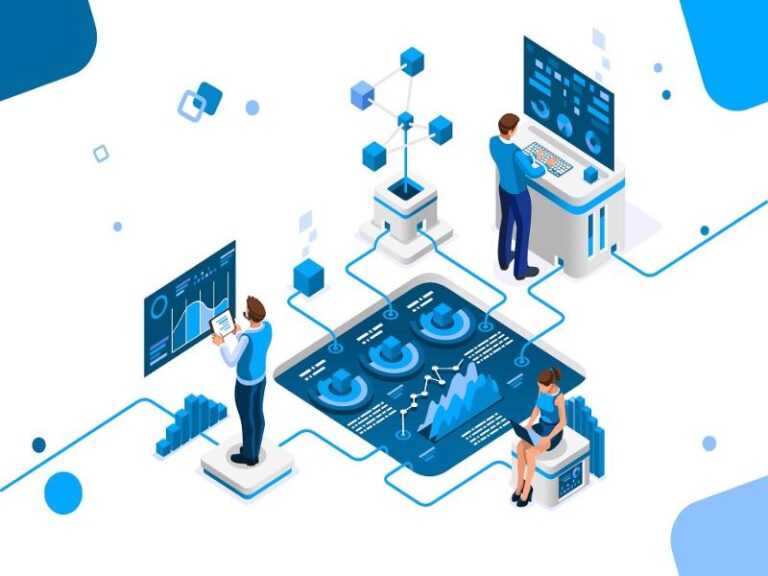12 Best Apps for Data Analysis
Explore the top data analysis tools with our list of the “12 Best Apps for Data Analysis. Optimize your data-driven decision-making with these versatile and essential data analysis apps.
Whether you’re a beginner or an experienced analyst, these applications provide essential features for efficient data manipulation, visualization, and interpretation, empowering you to make informed decisions based on valuable insights.
Best Apps for Data Analysis
Numerous apps and tools are available for efficient data analysis across various domains.
Here’s a list of popular ones, categorized based on their functionality:
1. Spreadsheet Software:
Microsoft Excel:
- Introduction: Microsoft Excel is a widely used spreadsheet software in the Microsoft Office suite. It provides a user-friendly interface for organizing, analyzing, and visualizing data. Excel is suitable for a wide range of users, from beginners to advanced data analysts.
- Features:
- Cell-based structure for organizing data in rows and columns.
- Formulas and functions for data manipulation and calculations.
- Charting and graphing capabilities for visual representation.
- PivotTables for summarizing and analyzing large datasets.
- Integration with other Microsoft Office applications.
- Use/Benefits:
- Excel is versatile and accessible, making it suitable for individuals and businesses of all sizes.
- Quick data entry and manipulation through a familiar interface.
- Suitable for basic to moderately complex data analysis and reporting.
- Widely used for financial modeling, budgeting, and project management.
Google Sheets:
- Introduction: Google Sheets is a cloud-based spreadsheet tool part of the Google Workspace (formerly G Suite). It allows users to collaborate in real-time and provides seamless integration with other Google Workspace applications.
- Features:
- Cloud-based collaboration with real-time editing and commenting.
- Integration with Google Drive for easy storage and sharing.
- Add-ons and scripts for extending functionality.
- Templates for common spreadsheet tasks.
- Data analysis functions and charting tools.
- Use/Benefits:
- Facilitates collaborative work with multiple users editing the same document simultaneously.
- Automatic cloud storage and version control.
- Accessible from any device with an internet connection.
- Seamless integration with other Google Workspace apps.
2. Data Visualization:
Tableau:
- Introduction: Tableau is a powerful data visualization and business intelligence tool that allows users to create interactive and shareable dashboards. It connects to various data sources, making it suitable for analyzing and visualizing diverse datasets.
- Features:
- Drag-and-drop interface for creating visualizations.
- Support for a wide range of data sources, including databases and cloud services.
- Dashboard creation with interactive filters and drill-down options.
- Real-time data analytics and sharing capabilities.
- Use/Benefits:
- Enables users to quickly create visually appealing and interactive dashboards.
- Suitable for exploring and analyzing large datasets.
- Facilitates data storytelling through dynamic visualizations.
- Ideal for business intelligence and data-driven decision-making.
Power BI:
- Introduction: Power BI is Microsoft’s business analytics tool for data visualization and sharing insights. It is part of the Microsoft Power Platform and allows users to connect to various data sources, transform data, and create interactive reports and dashboards.
- Features:
- Data connectivity to a variety of sources, including Excel, SQL Server, and cloud services.
- Data transformation and modeling capabilities.
- Drag-and-drop report creation with interactive visualizations.
- Integration with other Microsoft products and services.
- Use/Benefits:
- Seamless integration with Microsoft’s ecosystem, including Azure services.
- Enables users to create and share interactive reports and dashboards.
- Suitable for both self-service BI and enterprise-level analytics.
- Collaboration features for sharing insights across the organization.
3. Statistical Analysis:
R:
- Introduction: R is a programming language and software environment specifically designed for statistical computing and graphics. It is open-source and widely used in academia and industry for statistical analysis and data visualization.
- Features:
- Extensive statistical packages and libraries for various analyses.
- Data manipulation and cleaning capabilities.
- High-quality graphics and visualization tools.
- Active and supportive community for package development and troubleshooting.
- Use/Benefits:
- Ideal for statistical modeling, hypothesis testing, and data exploration.
- Offers advanced statistical techniques and machine learning algorithms.
- Customizable and extensible through packages and scripts.
- Suitable for both exploratory data analysis and complex statistical modeling.
Python with Pandas and NumPy:
- Introduction: Python, along with libraries such as Pandas and NumPy, has become a popular choice for data manipulation and analysis. It provides a versatile and readable programming language for data scientists and analysts.
- Features:
- Pandas for data manipulation and analysis with DataFrame structures.
- NumPy for numerical operations and array manipulations.
- Integration with various libraries for statistical modeling and machine learning.
- Extensive ecosystem for data science and analysis.
- Use/Benefits:
- Widely used for data cleaning, preparation, and exploratory data analysis.
- Integrates seamlessly with other data science and machine learning libraries.
- Supports a wide range of statistical and machine learning techniques.
- Ideal for scripting and automation of data analysis workflows.
SPSS:
- Introduction: SPSS (Statistical Package for the Social Sciences) is a statistical software package used for analyzing and visualizing data. It is widely used in social sciences, market research, and other fields that require statistical analysis.
- Features:
- User-friendly interface for statistical analysis.
- Data management and manipulation tools.
- Descriptive and inferential statistical analyses.
- Graphical representation of data.
- Use/Benefits:
- Well-suited for users with limited programming skills.
- Ideal for basic to advanced statistical analyses.
- Provides a comprehensive set of statistical tools for research and analysis.
- Supports data visualization for better interpretation of results.
4. Business Intelligence:
QlikView:
- Introduction: QlikView allows users to analyze and visualize data for better business insights. It is a business intelligence platform that provides interactive data discovery, visualization, and dashboards.
- Features:
- Associative data model for exploring relationships in data.
- Drag-and-drop interface for creating interactive visualizations.
- Collaboration features for sharing insights.
- Integration with various data sources for comprehensive analysis.
- Use/Benefits:
- Enables users to quickly analyze and visualize complex data sets.
- Facilitates data discovery through associative relationships.
- Suitable for business users seeking intuitive data exploration tools.
- Helps in making informed business decisions based on real-time insights.
Looker:
- Introduction: Looker is a business intelligence and data exploration platform that allows organizations to explore and analyze their data for actionable insights. It emphasizes data modeling and provides a collaborative environment.
- Features:
- Centralized data modeling for consistency across analyses.
- SQL-based queries for data exploration and analysis.
- Customizable dashboards for visualizing key metrics.
- Data sharing and collaboration features.
- Use/Benefits:
- Empowers users to create and share reports and dashboards.
- Focused on data modeling for consistent and accurate analysis.
- Suitable for organizations looking for a centralized BI platform.
- Provides a collaborative environment for data-driven decision-making.
5. Data Cleaning and Preparation:
OpenRefine:
- Introduction: OpenRefine helps clean and transform messy data into a usable format. It is an open-source tool that facilitates data cleaning, reconciliation, and transformation tasks.
- Features:
- Facilitates data cleaning and standardization.
- Allows for exploring and transforming large datasets.
- Provides a user-friendly interface for data manipulation.
- Supports scripting for advanced transformations.
- Use/Benefits:
- Ideal for cleaning and standardizing messy and inconsistent data.
- Enables users to explore and understand complex datasets.
- Suitable for data preparation tasks before analysis or visualization.
- Open-source nature allows for community-driven improvements.
Trifacta:
- Introduction: Trifacta is a cloud-based platform for cleaning and preparing data. It provides tools for data wrangling, cleaning, and transforming data into a format suitable for analysis.
- Features:
- Intuitive visual interface for data wrangling.
- Automation of data cleaning and transformation tasks.
- Collaboration features for team-based data preparation.
- Integration with various data storage and analysis platforms.
- Use/Benefits:
- Streamlines the process of cleaning and preparing data for analysis.
- Automation saves time and reduces manual data preparation efforts.
- Collaborative features support team-based data preparation.
- Integrates seamlessly with other data analysis and visualization tools.
6. Machine Learning and Predictive Analysis:
RapidMiner:
- Introduction: RapidMiner is an open-source platform for data science and machine learning. It provides a graphical interface for designing and deploying machine learning models.
- Features:
- Drag-and-drop interface for building machine learning workflows.
- Extensive library of machine learning algorithms.
- Integration with popular data analysis and visualization tools.
- Automated machine learning capabilities.
- Use/Benefits:
- Enables users to build and deploy machine learning models without coding.
- Supports a wide range of machine learning algorithms.
- Integrates seamlessly with other data analysis and visualization tools.
- Suitable for both beginners and advanced data scientists.
KNIME:
- Introduction: KNIME is an open-source platform for data analytics, reporting, and integration. It allows users to create data workflows using a visual interface.
- Features:
- Visual workflow design for data analytics and integration.
- Integration with various data sources and databases.
- Extensive set of data analysis and machine learning nodes.
- Collaboration and sharing capabilities.
- Use/Benefits:
- Facilitates the creation of data workflows without extensive coding.
- Supports a variety of data analysis and machine learning tasks.
- Integrates with popular databases and data sources.
- Collaborative features for team-based data analytics.
7. Database Management:
SQL Server Management Studio (SSMS):
- Introduction: SQL Server Management Studio (SSMS) is a tool for managing and querying SQL databases. It provides a comprehensive environment for database administrators and developers.
- Features:
- Query editor for writing and executing SQL queries.
- Database design and modeling tools.
- Administration tools for managing SQL Server instances.
- Integration with other Microsoft SQL Server services.
- Use/Benefits:
- Essential for managing and querying SQL databases.
- Provides a unified environment for database development and administration.
- Supports database design, modeling, and optimization tasks.
- Integrates with other Microsoft SQL Server services and tools.
DBeaver:
- Introduction: DBeaver is a universal database tool designed for developers and database administrators. It supports various databases and provides a consistent interface for database-related tasks.
- Features:
- Supports multiple databases, including relational and NoSQL.
- SQL editor for writing and executing queries.
- Database schema navigation and visualization.
- Data export and import capabilities.
- Use/Benefits:
- Provides a consistent interface for working with different types of databases.
- SQL editor facilitates query writing and execution.
- Supports database navigation, schema exploration, and visualization.
- Ideal for developers and database administrators working with diverse database systems.
8. Geographic Information System (GIS):
ArcGIS:
- Introduction: ArcGIS is a comprehensive geographic information system (GIS) for mapping and spatial analysis. It is widely used for visualizing, analyzing, and interpreting geographic data.
- Features:
- Mapping and visualization tools for spatial analysis.
- Geocoding and routing capabilities.
- Integration with various data sources, including satellite imagery.
- Advanced spatial analytics and modeling.
- Use/Benefits:
- Ideal for professionals working with geographic data and maps.
- Supports spatial analysis, geocoding, and routing tasks.
- Integrates with diverse data sources, including satellite imagery.
- Used in fields such as urban planning, environmental science, and logistics.
QGIS:
- Introduction: QGIS is an open-source GIS software with a wide range of features. It provides tools for viewing, editing, and analyzing geographic data.
- Features:
- Mapping and visualization tools for spatial analysis.
- Support for various data formats and sources.
- Extensive plugins and customization options.
- Community-driven development and support.
- Use/Benefits:
- Open-source nature allows for flexibility and community contributions.
- Suitable for users looking for a cost-effective GIS solution.
- Supports diverse spatial analysis tasks.
- Customizable through plugins and extensions.
9. Notebooks and Collaboration:
Jupyter Notebooks:
- Introduction: Jupyter Notebooks provide an interactive computing and data analysis environment in a document format. They support multiple programming languages and are widely used for data science and research.
- Features:
- Interactive and executable code cells.
- Rich text support for documentation and explanations.
- Integration with various programming languages.
- Visualization capabilities within the notebook.
- Use/Benefits:
- Ideal for interactive data analysis and exploration.
- Supports multiple programming languages, including Python, R, and Julia.
- Facilitates documentation and sharing of data analysis workflows.
- Widely used in research, education, and data science.
Google Colab:
- Introduction: Google Colab is a cloud-based platform that hosts Jupyter notebooks. It is often used for machine learning tasks and allows collaborative editing and execution of notebooks.
- Features:
- Cloud-based collaboration with real-time editing.
- Access to GPU resources for machine learning tasks.
- Integration with Google Drive for easy storage.
- Pre-installed libraries for machine learning.
- Use/Benefits:
- Facilitates collaborative work on Jupyter notebooks in the cloud.
- Provides access to GPU resources for accelerated machine learning tasks.
- Seamless integration with Google Drive for data storage and sharing.
- Ideal for machine learning projects and collaborative data analysis.
10. Cloud-Based Data Analysis:
Amazon QuickSight:
- Introduction: Amazon QuickSight is a business analytics service by AWS designed for visualizing data. It enables users to create interactive dashboards and reports.
- Features:
- Cloud-based analytics with easy data connection.
- Drag-and-drop interface for creating visualizations.
- Integration with various data sources in the AWS ecosystem.
- Pay-as-you-go pricing model.
- Use/Benefits:
- Seamlessly integrates with other AWS services for data connectivity.
- Provides a user-friendly interface for creating interactive dashboards.
- Scalable and suitable for organizations of all sizes.
- Pay-as-you-go pricing model allows cost-effective usage.
Google Data Studio:
- Introduction: Google Data Studio allows users to create customizable dashboards using various data sources. It is part of the Google Workspace and is known for its collaborative features.
- Features:
- Cloud-based collaborative dashboard creation.
- Integration with various data sources, including Google Analytics.
- Customizable and shareable dashboards.
- Real-time data connections.
- Use/Benefits:
- Enables collaborative creation and sharing of interactive dashboards.
- Integrates seamlessly with other Google Workspace apps.
- Supports real-time data connections for up-to-date insights.
- Customizable dashboards for specific reporting needs.
11. Web Scraping:
BeautifulSoup and Scrapy (Python libraries):
- Introduction: BeautifulSoup and Scrapy are Python libraries used for extracting data from websites through web scraping. BeautifulSoup is focused on parsing HTML and XML, while Scrapy is a more comprehensive web crawling framework.
- Features:
- BeautifulSoup: HTML and XML parsing and navigation.
- Scrapy: Framework for building web crawlers.
- XPath and CSS selectors for data extraction.
- Support for handling HTTP requests and responses.
- Use/Benefits:
- BeautifulSoup is suitable for simple HTML and XML parsing tasks.
- Scrapy provides a more extensive framework for building web crawlers.
- XPath and CSS selectors enable precise data extraction from web pages.
- Useful for collecting data from websites for analysis and research.
12. Text Analysis:
NLTK (Natural Language Toolkit):
- Introduction: NLTK (Natural Language Toolkit) is a Python library designed for working with human language data. It provides tools for text processing, analysis, and natural language understanding.
- Features:
- Tokenization, stemming, and lemmatization for text processing.
- Part-of-speech tagging and named entity recognition.
- Text classification and sentiment analysis.
- Extensive resources for natural language processing (NLP).
- Use/Benefits:
- Facilitates various text-processing tasks in natural language processing.
- Suitable for building applications related to language understanding.
- Used in research, education, and industry for text analysis.
- Provides a comprehensive set of tools for working with human language data.
Remember that the choice of tools depends on your specific needs, the type of analysis you’re conducting, and your familiarity with the tools. Many data analysts use a combination of these tools to perform end-to-end data analysis tasks.







4 Comments